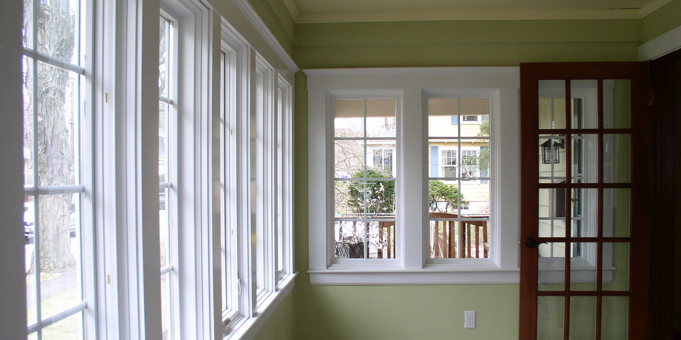Drafty windows can account for to 10 to 25 percent of overall heat loss. Weather stripping and insulating around windows can help reduce energy losses, but if you have older, single-pane windows you may want to consider replacing them.
Window frames and glazing can also affect energy loss. Wood frames are a better choice than aluminum frames, which can have condensation problems, or vinyl and fiberglass, which have more environmental impacts from production. If you choose aluminum frames, they should have insulating strips between the inside and outside of the frames.
Here are our tips for selecting windows:
- Adding storm windows may reduce heat loss from a window by 10 to 20 percent without requiring the purchase of new windows.
- Look for Energy Star-labeled windows that have at least double-panes and low-E, or low-emissivity, coatings to reduce heat transfer through the glass. Windows with low-E coatings may cost 10 to 15 percent more, but can cut energy losses by 30 to 50 percent.
- Choose windows with a low U-factor (at least 0.4 or lower) for maximum efficiency in cold climates. U-factor or U-value indicates how well the whole window insulates. A lower U-factor indicates less heat loss.
- In colder climates, south-facing windows with a low U-factor and a high Solar Heat Gain Coefficient, or SHGC, (0.6 or greater) will maximize heat gain in the winter. SHGC measures how much heat is gained from the sun through the window. In the summer, south-facing windows don’t add significant heat when properly shaded.
For more information on reducing your carbon footprint check out the Environmental Working Group’s Healthy Living Home Guide.



Recently on Twitter